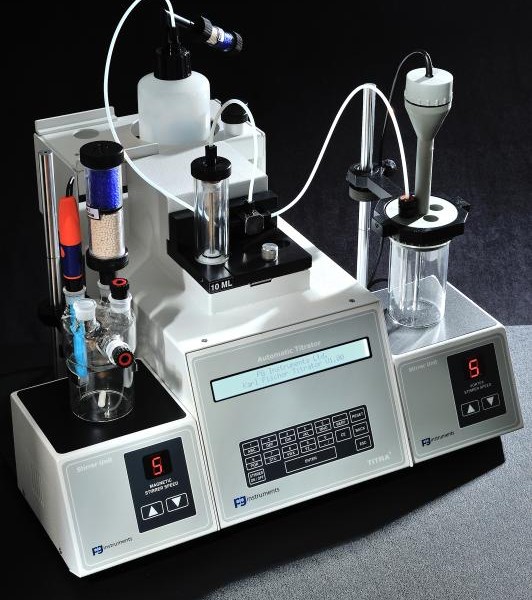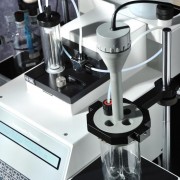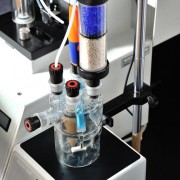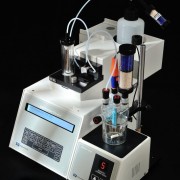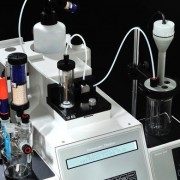Product Description
| AUTOMATED TITRATION SYSTEM
|
|||||||||
| The 12 series of Automated Titration performs the fundamental task of titration where the concentration of a chemical substance is determined by reacting it with a measured amount of another chemical. The Auto Titrator performs this analysis using a motor driven dispenser, stirred reaction vessel and electrodes which sense the completion of the reaction by measuring the potential difference between two electrodes.
The 12 series of Automatic Titration systems offers the following modes of analysis: INCREMENTAL – This method operates with a user selectable fixed dose and fixed intervals until the end point is detected or volume limit is reached. EQUILIBRIUM – This is the Universal and Dynamic Titration. In this titration the dose and time automatically are tuned to the titration trend with evaluation of the end point. pH CUT OFF/STAT – in pH cut off mode the end point is determined in a pre-selectable pH window. In pH-STAT mode the pH value is maintained until the pre-selected time interval is reached.
THE FOLLOWING TITRATIONS ARE AVAILABLE WITH THE 12 – 14 SERIES OF AUTOMATED TITRATORS
|
| SPECIFICATIONS | |
| Principle | Volume determination by equivilent point, end point or pH STAT |
| Control | Microprocessor based |
| mV Range | =/- 3200mV |
| Accuracy | +/- 0.1mV (+/- 0.0016pH) |
| Amplifier Input Impedance | >1012 Ohms |
| Burette Resolution | 1/5000 for 5ml, 1/10000 for 10ml, 1/5000 for 25ml |
| Filing Time | <20 Seconds |
| Keyboard | Alphanumeric splash waterproof polyester soft keys. |
| Titration Head | Manual Stand with swivelling arm |
|
|
|
| SPECIFICATIONS – Continued | |
| Stirrer System | Microcontroller based variable speed, high torque vortex stirrer with digital indicator. (Magnetic Stirrer Optional) |
| Sensors |
|
| Calibration | 3-point Calibration with entered buffer values and standardisation with pH 7 Buffer |
| End Point Detection |
|
| Cut-off Criteria |
|
| Analysis Methods |
|
| Results & Concentration Units |
|
| Method Storage | 50 methods with Parameters |
| Titrant Molarity Storage | 20 Values |
| Report Format |
|
| SPECIFICATIONS – Continued | |
| Input/Output peripheral Interface |
|
| Power | . 110 – 230v 50/60Hz |
| Environmental Conditions for Operation |
|

